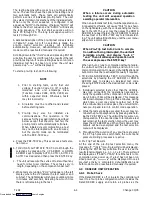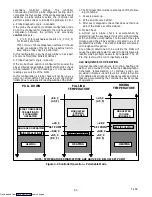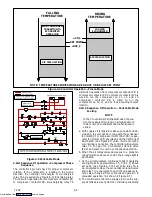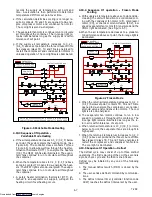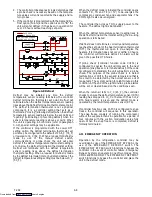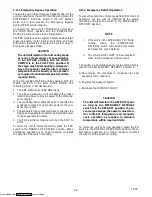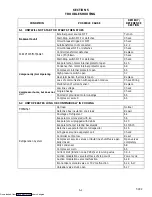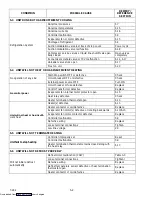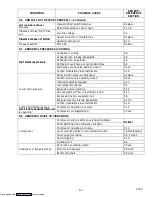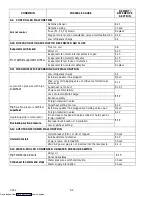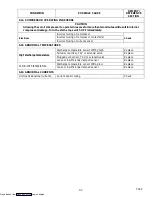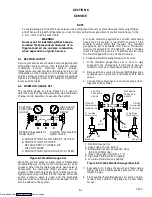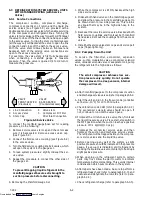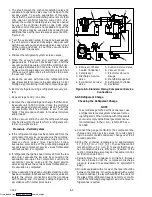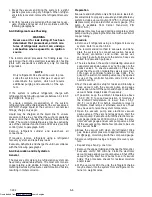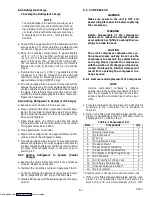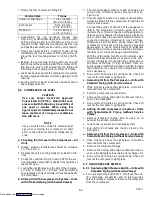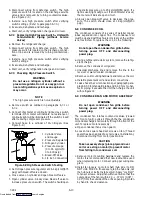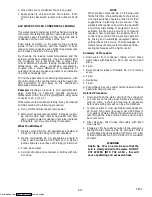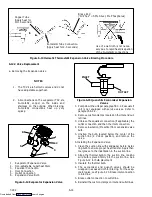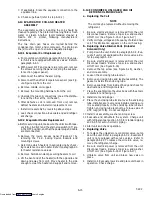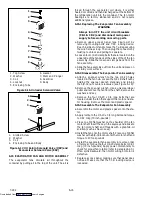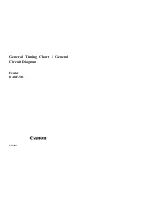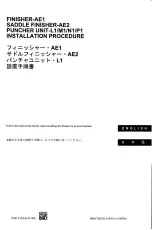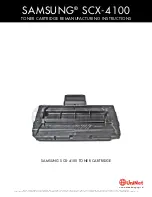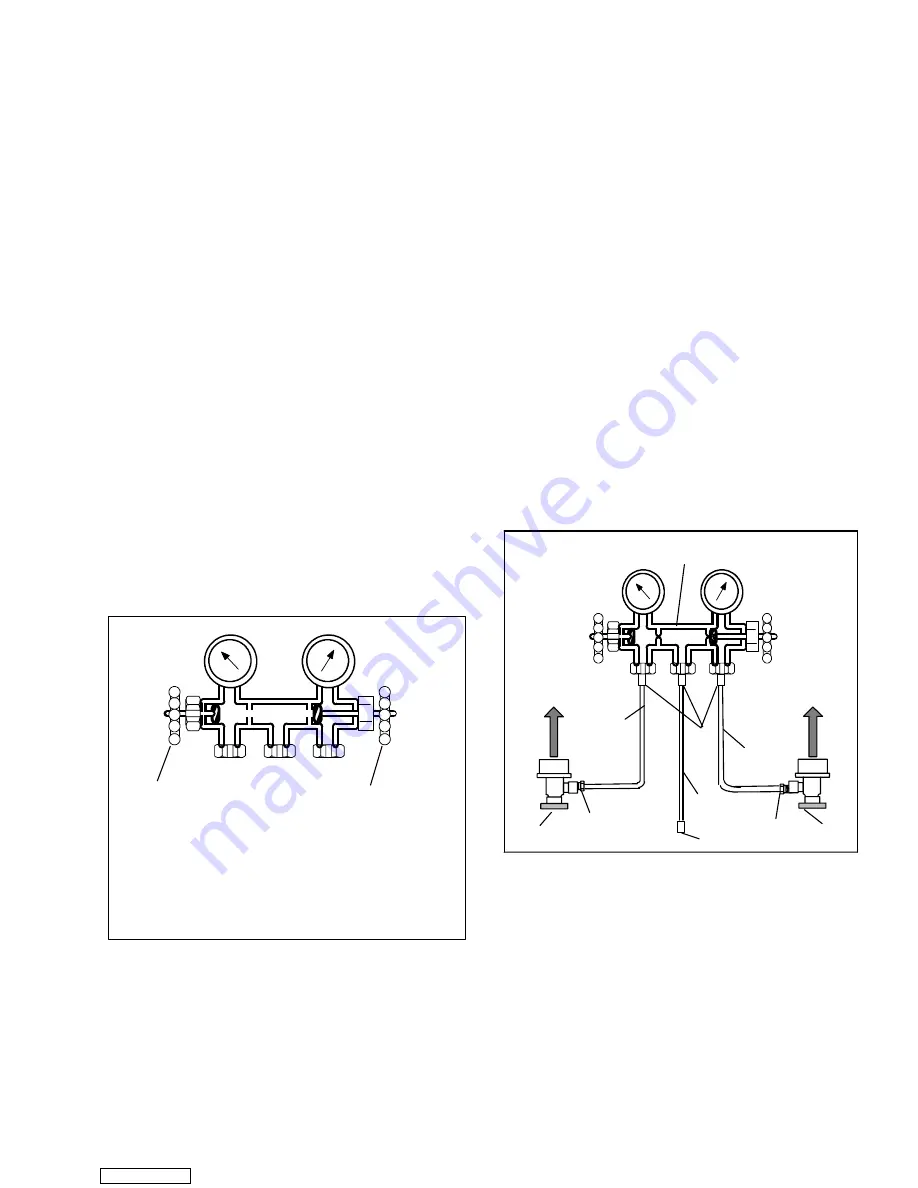
6-1
T-292
SECTION 6
SERVICE
NOTE
To avoid damage to the earth’s ozone layer, use a refrigerant recovery system whenever removing refriger-
ant. When working with refrigerants you must comply with all local government environmental laws. In the
U.S.A., refer to EPA section 608.
WARNING
Never use air for leak testing. It has been de-
termined that pressurized, mixtures of re-
frigerant and air can undergo combustion
when exposed to an ignition source.
6.1 SECTION LAYOUT
Service procedures are provided herein beginning with
refrigeration system service, then refrigeration system
component
service,
electrical
system
service,
temperature recorder service and general service. The
refrigeration section divided in to standard unit (with
service valves) and semi--hermetic systems (equipped
with service fittings). Refer to the Table Of Contents to
locate specific topics.
6.2 MANIFOLD GAUGE SET
The manifold gauge set (see Figure 6-1) is used to
determine system operating pressure, add refrigerant
charge, and to equalize or evacuate the system.
OPENED (Backseated )
HAND VALVE
CLOSED (Frontseated)
HAND VALVE
SUCTION
PRESSURE
GAUGE
DISCHARGE
PRESSURE
GAUGE
A
B
C
A. CONNECTION TO LOW SIDE OF SYSTEM
B. CONNECTION TO EITHER:
REFRIGERANT CYLINDER OR
OIL CONTAINER
C. CONNECTION TO HIGH SIDE OF SYSTEM
Figure 6-1 Manifold Gauge Set
When the suction pressure hand valve is frontseated
(turned all the way in), the suction (low) pressure can be
checked. When the discharge pressure hand valve is
frontseated, the discharge (high) pressure can be
checked. When both valves are open (all the way out),
high pressure vapor will flow into the low side. When the
suction pressure valve is open and the discharge
pressure valve shut, the system can be charged. Oil can
also be added to the system.
A R-134a manifold gauge/hose set with self-sealing
hoses (see Figure 6-2) is required for service of the
models covered within this manual. The manifold
gauge/hose set is available from Carrier Transicold.
(Carrier Transicold P/N 07-00294-00, which includes
items 1 through 6, Figure 6-2.) To perform service using
the manifold gage/hose set, do the following:
a. Preparing Manifold Gauge/Hose Set For Use
1. If the manifold gauge/hose set is new or was
exposed to the atmosphere it will need to be eva-
cuated to remove contaminants and air as follows:
2. Back seat (turn counterclockwise )both field service
couplings (see Figure 6-2) and midseat both hand
valves.
3. Connect the yellow hose to a vacuum pump and re-
frigerant 134a cylinder.
OPENED
(Backseated )
HAND VALVE
CLOSED
(Frontseated)
HAND VALVE
SUCTION
PRESSURE
GAUGE
DISCHARGE
PRESSURE
GAUGE
To Low Side
Access Valve
To High Side
Access Valve
Red Knob
Blue Knob
1
4
3
YELLOW
2
4
5
6
3
RED
3
BLUE
2
1. Manifold Gauge Set
2. Hose Fitting (0.5-16 Acme)
3. Refrigeration and/or Evacuation Hose
.
(SAE J2196/R-134a)
4. Hose Fitting w/O-ring (M14 x 1.5)
5. High Side Field Service Coupling
6. Low Side Field Service Coupling
Figure 6-2 R-134a Manifold Gauge/Hose Set
7. Evacuate to 10 inches of vacuum and then charge
with R-134a to a slightly positive pressure of 0.1 kg/
cm
@
(1.0 psig).
8. Front seat both manifold gauge set valves and dis-
connect from cylinder. The gauge set is now ready
for use.
Downloaded from
Summary of Contents for 69NT40-531 Series
Page 2: ...Downloaded from ManualsNet com search engine ...
Page 4: ...Downloaded from ManualsNet com search engine ...
Page 8: ...Downloaded from ManualsNet com search engine ...
Page 16: ...Downloaded from ManualsNet com search engine ...
Page 57: ...Downloaded from ManualsNet com search engine ...
Page 104: ...Downloaded from ManualsNet com search engine ...
Page 106: ...7 2 T 292 Figure 7 2 SCHEMATIC DIAGRAM Downloaded from ManualsNet com search engine ...




